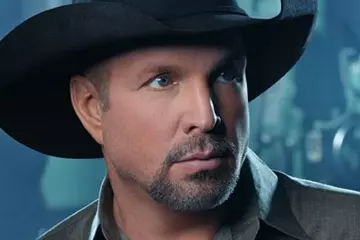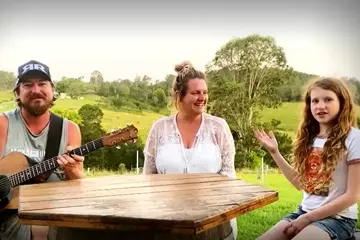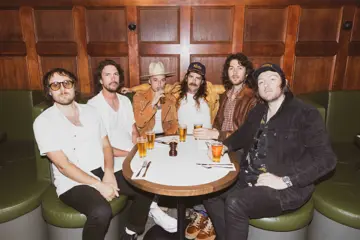It’s no secret that country music is on the rise across the globe, but as the genre travels further and further past its traditional American homeland, nowhere is it rising quicker than here in Australia.
So much so that America’s Country Music Association (CMA)’s newly appointed Director of International Relations and Development Meredith Goucher will be front and centre at this year’s BIGSOUND music industry conference in Brisbane. In charge of country music’s international expansion, Goucher will be taking the pulse of a market that is nearing maturity, soon to be rivaling the US in its adoption of the genre.
Although Australia has a long and proud history of local successes in country music domestically over the twentieth century, from Slim Dusty and Chad Morgan through to John Williamson and Troy Cassar-Daley, nothing compares to the genre’s push into the mainstream over the last three years. Across the globe, the growth in country music has been steadily outpacing the industry average, with an annual growth rate here in Australia of 9.4%. The genre’s market share in Australia has nearly doubled since 2021, with a large portion of that growth coming from gen z.
Bucking the stereotypes, Goucher says the new wave of country music is young, inclusive and mainstream.
“I can tell you, from Luke Combs events to CMC Rocks– Australian country music fans are very similar to country music fans in Denmark and country music fans in London. All around the world, when you look at photos of live events with Luke Combs, Megan Moroney or Zach Bryan, you are going to see a young, heavily female audience. You're going to see fans of music. And yes, you're going to see people in cowboy boots, but you’ll see a lot of people that live in the city doing their own ‘country-core’ vibe. You're going to see the country aesthetic in a very playful way and a lot of people are surprised when they realise what the country consumer actually is.”
Join our community with our FREE weekly newsletter
While the rapid genre growth may have surprised some in the mainstream scene, Goucher says the genre has been quietly building over decades, crediting passionate people across the world that fall under the spell of Nashville and have become advocates in their home territories. She credits the CMA’s Global Task Forces, harnessing that passion as a key reason that the momentum has been able to hit a tipping point, not just in Australia, but in other territories also.
While the oldest CMA Task Force is in the UK, clocking up nearly thirty years in operation, Australia is not far behind, with over two decades of growth, overseeing the strongest of the five regions with CMA Task Forces currently in operation. Starting as a small phone hook-up between Nashville and Australia for early adopters who could see the commercial and cultural potential for the genre, CMA was able to provide research, resources and connection for the fledgling country music outpost.
“It [the task force] came about, driven by Rob Potts, Michael Chugg, Tim Daley and a few other very passionate people that worked in all genres but were particularly passionate about country music. They formed this coalition where they wanted to gather and talk to the people that were their counterparts in the States and needed help making that link. And so they found CMA and started working together.”
The Australian task force has grown in strength over the years and now includes representatives from all three major labels, major promoters including Live Nation, TEG and Chugg / Frontier, DSPs, radio, media, publicists and more, spreading its wings across the ditch to now also include the New Zealand market. The task force is voluntary, market-driven and exists only to further the commercial and cultural potential of the genre.
“[Task Force members] come together and take their hats off as competitors and they act as collaborators to find ways to grow the genre in their particular market. Sometimes during these calls, people are very vulnerable about the obstacles they're facing and their counterparts are very honest about what they're facing too. There have been beautiful collaborative moments where competitors have come together to co-ordinate activities and timelines so we can continue to grow the market in a nurturing way.”
Goucher says that the CMA plays a co-ordination and networking role, but that the activities and growth in each market are up to the companies and individuals to drive. CMA membership is inclusive and open to all full-time music industry professionals.
“The task force members come into the room because they are there to bring information back and bring it to their companies and help their companies grow country music and the ways that they engage with it. They're also there to gain the stats that CMA provides. We are the go-to resource for country music statistics, because we invest heavily in our insights department to make sure that we can speak. accurately and eloquently to the growth of country music all over the world. And we have incredible partnerships with multiple data partners, some that we’ll be revealing more about at BIGSOUND.”
While those statistics show that country music is having a moment, Goucher believes that unlike previous Australian dalliances with cultural moments like Billy Ray Cyrus or Shania Twain, this new rise in country music is here for good.
“This time around, it's more than one artist. It's more than one moment. This is a year after Beyonce released Cowboy Carter. It's a year after Post Malone got into country music. It's a year after Shaboozy and Dasha. [Country music] is still outpacing industry growth a year after all of that, so it's not just that we got really lucky with a couple of releases. We have maintained those new fans. They're staying with us and we're still bringing in new fans. The growth rate went from good to incredible. I think growth rates eventually slow down, but I don't see an end in sight in the near future because of the great opportunity that there is for growth still in this market.”
For Australian artists, Goucher believes that not only is it important to have local artists expressing themselves to local audiences, but that significant export opportunities abound.
“When the Australian task force formed twenty years ago, getting to the other side of the planet was not accessible like it is today. You couldn't just go on the internet and book a ticket and some meetings. The opportunities for Australian country artists are vast if they're willing to travel. It is quite an investment to get to other markets (outside of New Zealand which is a great growth market), but I would look to the UK, Sweden, Mexico, Norway and Canada. Luckily Australia has incredible entities that are funded by their government like Sounds Australia and Music Australia to help offset expenses, particularly when they're playing with festivals. It’s quite a unique support system that is a benefit that Australians have that U.S. artists don't, making them potentially more available to export to new territories.”
But for country music artists and fans alike, the heart of the genre is in Nashville. For a town around half the size of Adelaide, what makes it the epicentre and heartbeat of an entire genre?
“It is very unique to country music to have the collaborative feel that we have in all of our task forces and it exists because this particular city had music at its heart as it developed. It's about physical proximity and songwriters being able to walk down here to a studio and then down the street to the left to do another session, and then their label is just up the road. It was about keeping everything close. To have all the conversations, to have these mutual understandings and to grow together. It's a community that just doesn't exist outside of Nashville and it's something we try to duplicate as CMA and try to build many Nashvilles through our task forces.”
“It's a kind community. Here in Nashville, almost anyone will have a cup of coffee with you. A lot of people come together in rooms; probably back to that underdog feeling [as a historically small genre] where we have to make sure we work together so we don't lose this. I mean, CMA was formed back in 1958 as a direct reaction to Elvis Presley because the radio guys at the time thought country music was going to go away along with their livelihood. I think it was a great example of how Nashville could come together as a community to make sure that we take care of each other, and how country music as a whole is an extension of that community, making sure that we grow together.”
With her impending trip to Brisbane for BIGSOUND, we discuss the clustering of country music infrastructure in Queensland, rather than the traditional business hubs of Sydney and Melbourne. With major festivals including CMC Rocks, Gympie Muster, Groundwater and Savannah in the Round basing in the state along with the headquarters for media including Kix, iHeart Country and Countrytown as well as the Australian office for US indie label Big Loud, we ask Goucher whether Brisbane could be on its way to becoming Australia’s Nashville.
“It’s the hub of country music in Australia. I think y’all are already there.”















